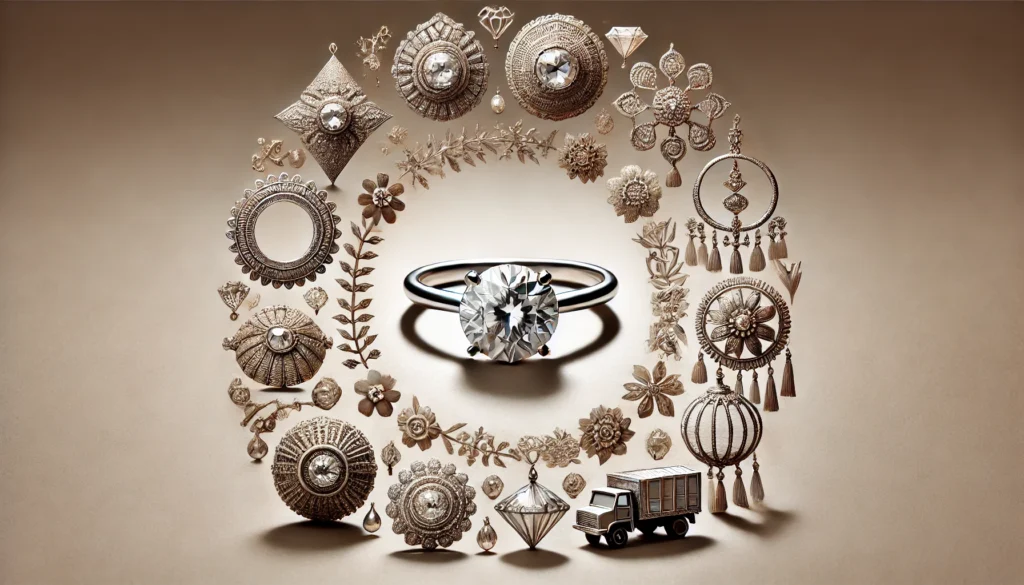
In 1477, Archduke Maximilian of Austria presented Mary of Burgundy with a diamond ring, sparking a tradition that would endure for centuries. This simple yet profound gesture highlights how diamonds have become embedded in cultural practices around the globe. From symbols of eternal love in the West to talismans of good fortune in India, the cultural significance of diamonds is as multifaceted as the gemstones themselves.
Diamonds in Western Cultures: Symbols of Love and Eternity
In Western cultures, diamonds are predominantly associated with love and commitment. The tradition of diamond engagement rings is deeply rooted in the belief that diamonds, with their unparalleled hardness, symbolize an unbreakable bond. The “A Diamond is Forever” slogan, popularized by De Beers in the mid-20th century, further cemented this notion, making diamonds synonymous with eternal love.
Key Uses:
- Engagement Rings: Representing commitment and enduring love.
- Anniversary Gifts: Often given to mark milestone anniversaries.
- Heirloom Jewelry: Passed down through generations, symbolizing family heritage.
Indian Culture: Diamonds as Harbingers of Good Fortune
In India, diamonds have been cherished for centuries, not only for their beauty but also for their supposed mystical properties. Ancient Indian texts, such as the Arthashastra, mention diamonds as symbols of power and status. Furthermore, different types of diamonds were believed to bring various forms of good luck and protection to their owners .
Key Uses:
- Bridal Jewelry: Adorning brides in elaborate diamond jewelry is a common practice, symbolizing wealth and prosperity.
- Spiritual Significance: Diamonds are sometimes used in religious rituals, believed to channel divine energy.
- Astrological Talismans: Worn according to astrological advice to bring good fortune.
African Cultures: The Duality of Diamonds
Africa, the birthplace of many of the world’s most famous diamonds, has a complex relationship with these gemstones. While diamonds are celebrated for their beauty and economic value, they are also reminders of the continent’s colonial past and the modern issues surrounding conflict diamonds.
Key Uses:
- Traditional Adornments: In some African cultures, diamonds are used in ceremonial jewelry, symbolizing status and beauty.
- Economic Value: Diamonds are crucial to the economies of many African countries, though this is often tempered by the socio-economic challenges associated with mining.
Chinese Culture: Diamonds in a New Light
In China, diamonds have only recently gained popularity as symbols of love and commitment, largely influenced by Western traditions. However, they are increasingly becoming an integral part of modern Chinese wedding customs.
Key Uses:
- Wedding Jewelry: Diamond rings and jewelry are becoming standard in Chinese wedding ceremonies.
- Status Symbols: Diamonds are also seen as indicators of modernity and social status.
- Investment: Many Chinese view diamonds as valuable assets, contributing to their growing market demand.
Middle Eastern Cultures: Opulence and Tradition
In the Middle East, diamonds are often associated with opulence and grandeur. They are integral to the lavish jewelry worn during significant life events and celebrations.
Key Uses:
- Bridal Jewelry: Brides are adorned with intricate diamond pieces, signifying wealth and beauty.
- Gifts: Diamonds are frequently given as gifts to mark special occasions, reflecting generosity and prosperity.
- Cultural Heritage: Diamond jewelry often features traditional designs, blending modern elegance with cultural heritage.
Conclusion: Diamonds as Global Icons
From the engagement rings of the West to the astrological talismans of India, diamonds hold a unique place in the cultural fabric of societies around the world. Their multifaceted roles—as symbols of love, power, spirituality, and status—highlight the universal allure of these sparkling gems. As you reflect on the cultural significance of diamonds, consider how these timeless stones continue to shape traditions and beliefs across the globe.

